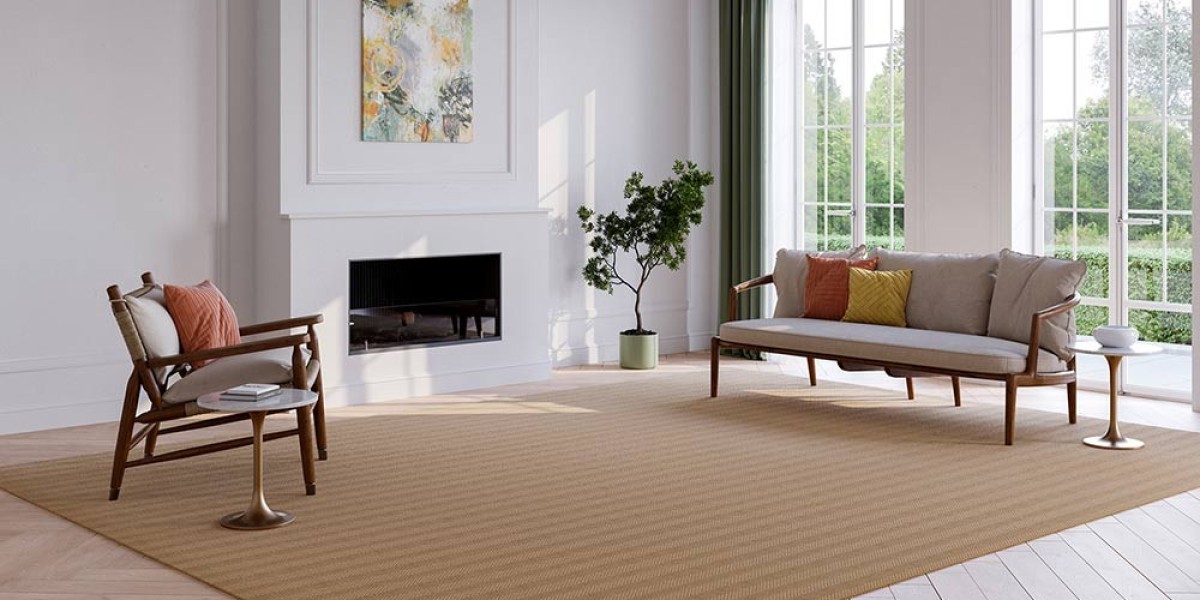When it comes to sustainable, stylish, and durable flooring options, sisal carpets stand out as a top choice for homeowners looking to blend nature with contemporary design. Made from the fibers of the agave plant, sisal carpets bring a unique texture and aesthetic appeal to any space. In this blog, we’ll explore the benefits, uses, and care tips for sisal carpets, so you can decide if this natural flooring option is right for your home.
What is Sisal?
Sisal is a natural fiber extracted from the leaves of the agave plant, primarily grown in Mexico, Brazil, and parts of Africa. Known for its strength and resilience, sisal has been used for centuries in the making of ropes, twine, and, more recently, carpets and rugs. Sisal fibers are often woven into a variety of textures, ranging from tight, fine weaves to thick, bold patterns that can add character to any room.
Why Choose Sisal Carpets?
Eco-Friendly and Sustainable
One of the primary reasons sisal carpets have become increasingly popular is their eco-friendliness. Being a natural fiber, sisal is biodegradable and renewable. The production process is low-impact, and the plant grows quickly, making it a sustainable option compared to synthetic carpeting materials.Durability
Sisal carpets are incredibly durable and are resistant to high foot traffic, making them ideal for busy areas of the home like hallways, living rooms, and entryways. Unlike some synthetic fibers, sisal won't flatten over time, and it maintains its texture and appeal for years.Aesthetic Appeal
Sisal carpets offer a natural, earthy look that complements a wide range of interior design styles. Whether your home has a rustic, bohemian, or modern vibe, sisal's neutral tones can blend seamlessly with your decor. The organic texture adds warmth and depth to any space, creating a calming and inviting atmosphere.Hypoallergenic
Sisal fibers don’t trap dust or allergens as easily as some synthetic carpets, making them an excellent option for allergy sufferers. Their natural anti-static properties also prevent the buildup of static electricity and dust.Versatility
Sisal carpets come in various styles, patterns, and weaves, offering a range of design possibilities. From tight and smooth weaves that offer a sleek appearance to chunkier textures that create a bold statement, there is a sisal carpet for every taste.
Where to Use Sisal Carpets
Sisal carpets can be used in various parts of your home. Here are a few suggestions:
- Living Room: Sisal carpets can create a neutral base for your living room, adding warmth and sophistication without overpowering your existing furniture.
- Hallways: Due to their durability, sisal carpets are perfect for high-traffic areas like hallways and corridors. Their texture can withstand daily wear and tear while maintaining their appearance.
- Staircases: Sisal is an excellent choice for stair runners as it provides both aesthetic appeal and added grip, reducing the chances of slipping.
- Home Office: A sisal rug can bring a touch of nature to your workspace, creating a calming and productive environment.
However, sisal is not recommended for areas with high moisture, such as bathrooms or kitchens, as the fibers can absorb moisture and become stained or moldy.
How to Care for Sisal Carpets
While sisal carpets are durable, they do require specific care to ensure they stay in pristine condition.
Vacuum Regularly
Sisal carpets can easily trap dust and dirt in their fibers, so regular vacuuming is essential. Use a vacuum with strong suction and avoid using brushes, as they can damage the natural fibers.Avoid Moisture
Sisal is highly absorbent, and exposure to moisture can lead to staining or even mildew. Immediately blot any spills with a dry cloth, and avoid wet cleaning methods. For tough stains, professional dry cleaning is recommended.Use a Carpet Pad
To prolong the life of your sisal carpet, place a non-slip rug pad underneath. This will help reduce friction between the carpet and the floor, preventing wear and tear.Rotate Regularly
To ensure even wear, rotate your sisal carpet or rug every few months, especially in high-traffic areas.
Sisal vs. Other Natural Fiber Carpets
Sisal is often compared to other natural fiber carpets, such as jute, coir, and seagrass. Here's how it stacks up:
- Sisal vs. Jute: Jute is softer than sisal but not as durable, making it better suited for low-traffic areas like bedrooms. Sisal, on the other hand, is more robust and resistant to foot traffic.
- Sisal vs. Seagrass: Seagrass is less porous and naturally stain-resistant, making it a good choice for areas prone to spills. However, seagrass has a more slippery texture, whereas sisal provides better grip and texture.
- Sisal vs. Coir: Coir, made from coconut husks, is rougher than sisal and has a more rustic appearance. Sisal offers a more refined and versatile look.
Final Thoughts
Sisal carpets are a beautiful and environmentally conscious flooring option that combines durability with aesthetic appeal. Whether you're looking to add texture to a modern living room or create a cozy feel in your home office, sisal carpets can provide the perfect blend of style and function. Their natural beauty, combined with low maintenance and sustainability, makes them a popular choice for those looking to bring a bit of nature indoors.










